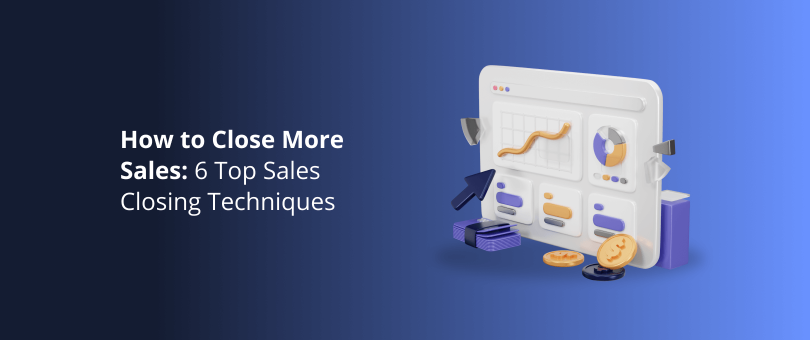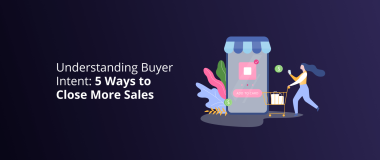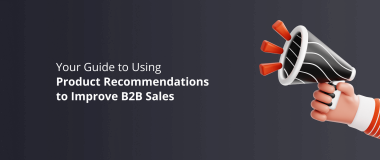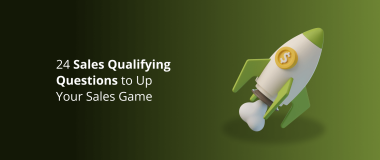Let’s face it – there are people who will never buy from you. They may not have the budget, not need the product, or may just not be the right match for your business.
However, more often than not, if you’ve done a good job at lead qualification and sales prospecting, it’s a safe bet that you are reaching out only to viable potential customers.
Unfortunately, the fact that a client is a great match doesn’t necessarily mean they will make a purchase.
To tilt the scales in your favor you need to use the proper sales-closing techniques with the right customers.
In this article, we’ll be talking about closing sales, highlighting the most successful techniques and when to use them, and providing actionable tips on how to close sales faster.
Read on to up your sales game!
How to Close a Sale
Closing a sale is the culmination of the whole marketing and sales process.
In order for the sales closing techniques you’ve chosen to be successful, you have to first take a few steps back and make sure that you’ve done everything right and have all the information you need.
Even if you are conducting cold calls, you still need to do a little digging first to prepare.
Because you are not just selling a product -r, you need to understand why people need it, and how they can benefit the most from your solution.
And that’s how you close a sale:
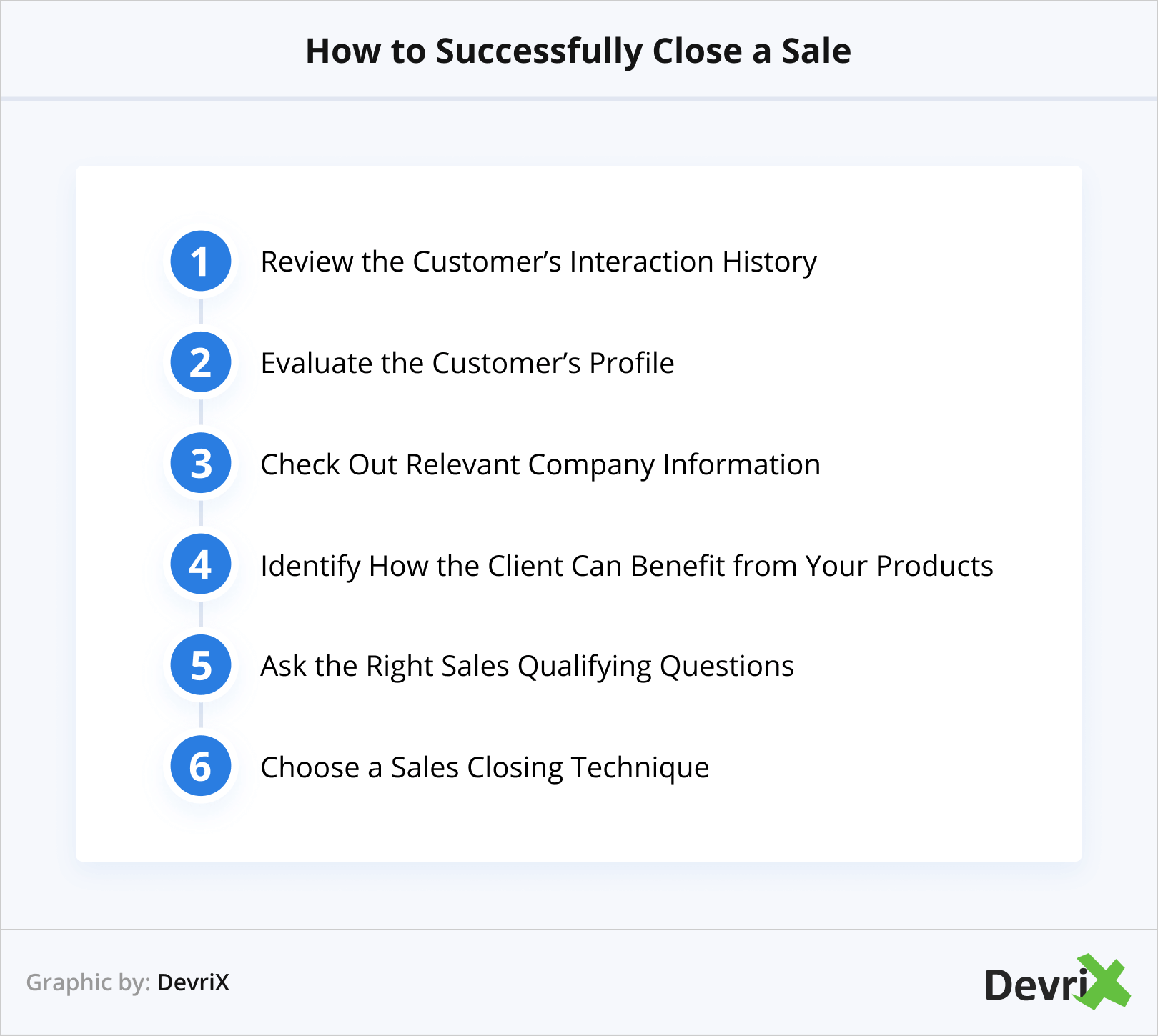
1. Review the Customer’s Interaction History
First, you should review the information you have about the customer’s journey so far. If you are using a CRM tool, you should have this data logged in your Customer Profile.
Knowing their every step will provide you with a clearer picture of what stage of the journey they are in and what sales closing technique is likely to deliver the best results.
For example, if you know what pieces of content the customer has interacted with, you may obtain an idea of what problems they might be facing, and what issues they are struggling with.
Just don’t show you know too much information, because this can feel a bit creepy.
2. Evaluate the Customer’s Profile
You need to learn everything you can about the customer, including, but not limited to, their personal and professional information, their role in the decision-making process, details about their schedule, opinion/s of the product, potential substitutes that they are using, needs and pain points, and so on, and so forth.
Every piece of information can help you close the sale when the time comes.
Furthermore, as closing the sale rarely happens the first time you make contact, over the course of your communication, you should try building a connection with the potential customer by understanding them and their personal life. This way, every interaction will bring you closer to closing the sale.
If you can find details about their hobbies and interests, you can use them to strengthen the relationship – this can tip the scales in your favor, especially when the customer is considering your brand and a competitor.
3. Check Out Relevant Company Information
You should research the company where your contact works and find out details about their current state of affairs, their problems, the challenges they face, their clients, and anything else pertaining to why they may need your products and services.
Also, make a list of similar companies that are already your clients and are happy with your products and services.
Pointing out customer success stories and how your product/s has helped make them is a powerful trump card. You can leverage it to show potential buyers how they can reap the same benefits.
4. Identify How the Client Can Benefit from Your Products

When talking to the client, you should focus on the benefits your products provide.
People don’t buy products just because they sound great – they buy them because they want to solve their problems, make their lives better, and satisfy their needs.
If you are to convince the client to make a purchase, you have to connect your product to those needs and paint the customer a picture.
5. Ask the Right Sales Qualifying Questions
Regardless of how exhaustive the information that you collect about the customer is, nothing beats talking to them in person.
By asking the right sales qualifying questions, you can fill in the gaps in their profile and your understanding of their situation, and gauge how likely they are to make a purchase.
Furthermore, you can get to better know the person at the other end of the line and consider what sales closing technique may work best based on their personality and attitude.
You can find a detailed list of sales qualifying questions in our article here on the topic.
6. Choose a Sales Closing Technique
Once you collect all the information you need, you should build up a strategy and choose a sales closing technique that best matches the customer’s profile.
What technique to use depends on how well you know the customer, how many times you’ve interacted with them, and what type of relationship you’ve built.
Furthermore, it depends on the resources at your disposal – i.e. whether or not you can make them a special offer and/or a discount, provide a demo or a test out, etc.
Of course, it also depends on whether the customer is ready to make a purchase.
In a nutshell, you need to be flexible and act in real time.
How To Close More Sales: 6 Top Techniques
Here are the 6 most popular and successful sales closing techniques to consider:
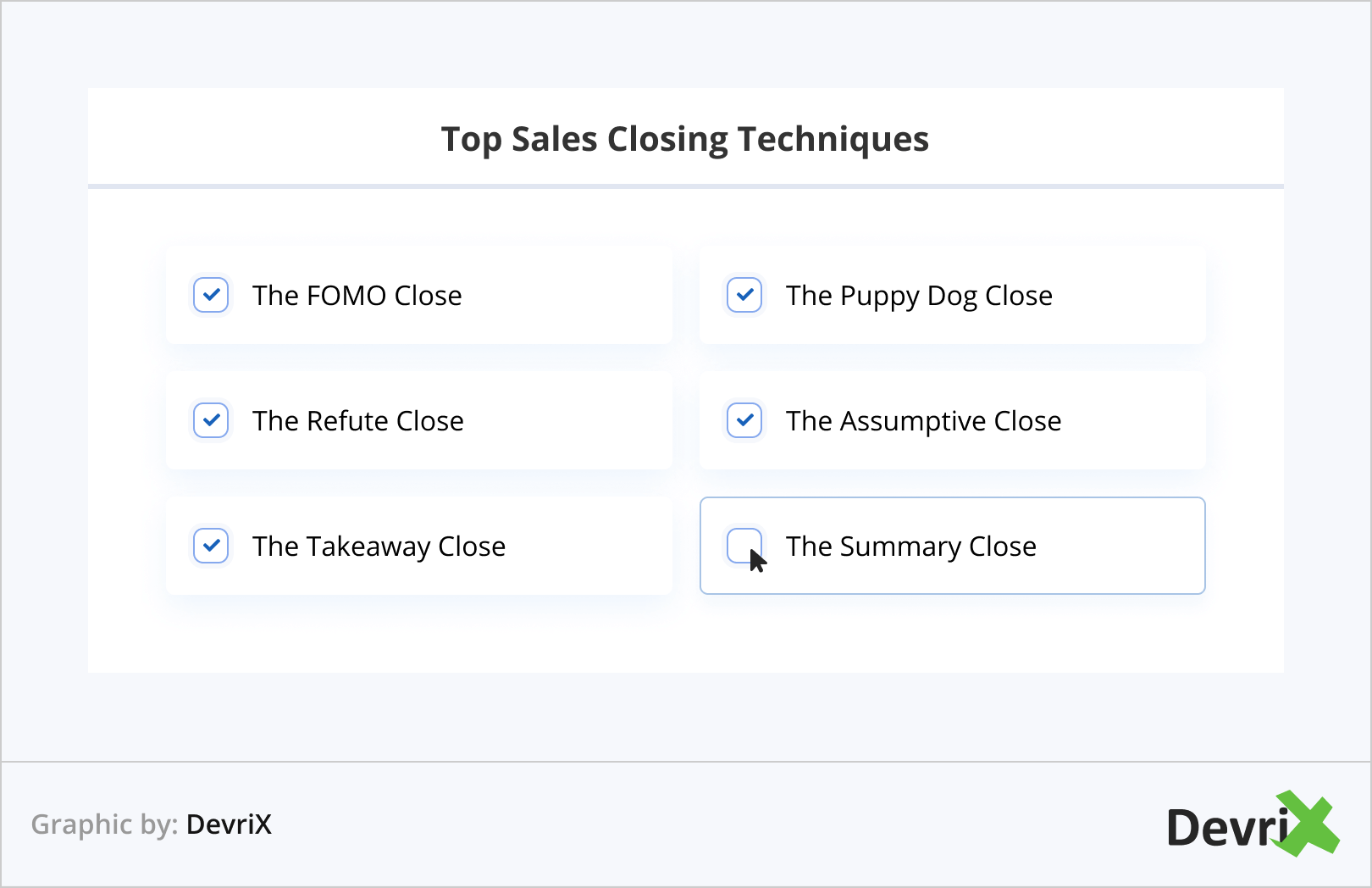
1. The FOMO Technique
This sales closing technique relies on the basic psychology and fear of missing out on something special – a well-known engine of sales and marketing.
When using FOMO or Fear Of Missing Out you present the customer with a tempting limited offer. Usually, the idea is that if you seal the deal here and now, they will obtain a special benefit, such as a lower price, additional value, an extra feature, or something else that applies to the product or service.
The winning combination here is to make a compelling offer that aligns with the needs of the client during a short set period of time in which they need to make a decision before the proposition expires.
When to use it:
This technique works best when the client shows enough signs that they are willing to buy the product, but are taking too much time deciding.
When to avoid it:
If the customer is not sure that they want or need the product, such an offer is unlikely to change their mind.
2. The Puppy Dog Close
The name of this sales closing technique is based on the idea that when you go to a shelter or a pet store, once you hug a puppy, you become attached to it and you end up adopting/buying it, because you don’t want to let it go.

Here, you can replicate this feeling by offering the client a demo, free trial, or a test drive, depending on the product.
The idea is to show them how awesome your product or service is, and allow them to experience first-hand how much they can benefit from using it.
At the end of the trial, hopefully, they will feel that they can’t live without your product anymore.
When to use it:
You can use this technique when you know that the client is a perfect match for your product, but they still need some convincing. Also, you can use it when they are choosing between your product and a competitor’s.
When to avoid it:
If your product is not one that can be tested, or if the customer is not that good a fit.
3. The Refute Close
In this technique, your goal is to wear down the customer by disputing their objections to the deal, and showing them that the product is a great fit for their needs.
The easiest way to do this is by asking them questions, assessing why they may not be willing to continue with the purchase and providing valid counterpoints that disprove their concerns.
This can be a great moment to point out your customer success stories and try to make the prospect relate to your existing clients.
When to use it:
If you are faced with the type of customer that has been focusing on the negatives and pointing out reasons why not to buy the product.
When to avoid it:
When the customer’s reasons not to buy the product make sense.
4. The Assumptive Close
This one relies on your confidence that the product and the client are a perfect match and the deal is as good as sealed.
To project the same feeling onto the customer, the salesperson uses language and vocabulary that assume the client is on the same page, and proposes actions that imply the sale is already in motion.
Meanwhile, they observe and analyze the behavior of the customer to see if the approach is working.
Still, the goal is not to be too intrusive and/or aggressive, because this may drive the customer away.
When to use it:
If the customer and the product are, indeed, a perfect match. Also, when you are upselling and cross-selling to existing clients.
When to avoid it:
If the customer is hesitant or doesn’t show interest in the product.
5. The Takeaway Close
This is another psychological move that you can use when the customer is hesitant or uncertain.
In it, you can suggest that they are actually not that great a fit for the product, or maybe not even on par with the rest of your clients. Of course, you have to be very subtle – the goal is not to offend them but to ruffle their pride a little, and make them want the product more.
The psychological move here is that you take them by surprise because you are not trying to convince them to make a purchase. And second, you’ve offered them something and then you decide to take it away (hence, the name of the tactic), which makes the product feel even more valuable.

Another reading of this technique is to offer the customer a stripped-down version of the product at a better price. This way, if their budget is the issue, they may be willing to make a smaller purchase, and you can always upsell to them later. Or, with some prodding, you may even convince them to buy the full package.
When to use it:
If the customer is interested in the product but is hesitant, uncertain, or just takes too much time to decide.
When to avoid it:
If the customer doesn’t fit the described profile.
6. The Summary Close
For this close, you summarize all the benefits and perks your product or service provides so that you can showcase it in all of its glory.
Depending on your conversations with the client so far, you can also compare your solution to different competitors, highlighting how it can answer the client’s needs and fix their pain points.
This works especially well when you’ve provided the customer with a lot of information over the course of your communication with them. The summarized takeaways remind them of the most important details and help them make up their minds.
When to use it:
In long sales cycles that involve many interactions with the customer over a long period of time. Also, when your product has a lot of features, you offer different tiers, or in other cases when the information may be too much for the client to remember.
When to avoid it:
When the product is simple, you’ve had only one or a few interactions with the client, and/or there isn’t that much information to summarize.
Bottom Line
Sales are an art form.
They require soft skills, basic psychology, observational skills, and a lot of patience.
However, above all, in order to be successful when closing sales, you need to do your homework first and know your customer well.
This way, you can choose the most suitable sales closing techniques, make the best selling points, and charm the customer into signing that deal.
